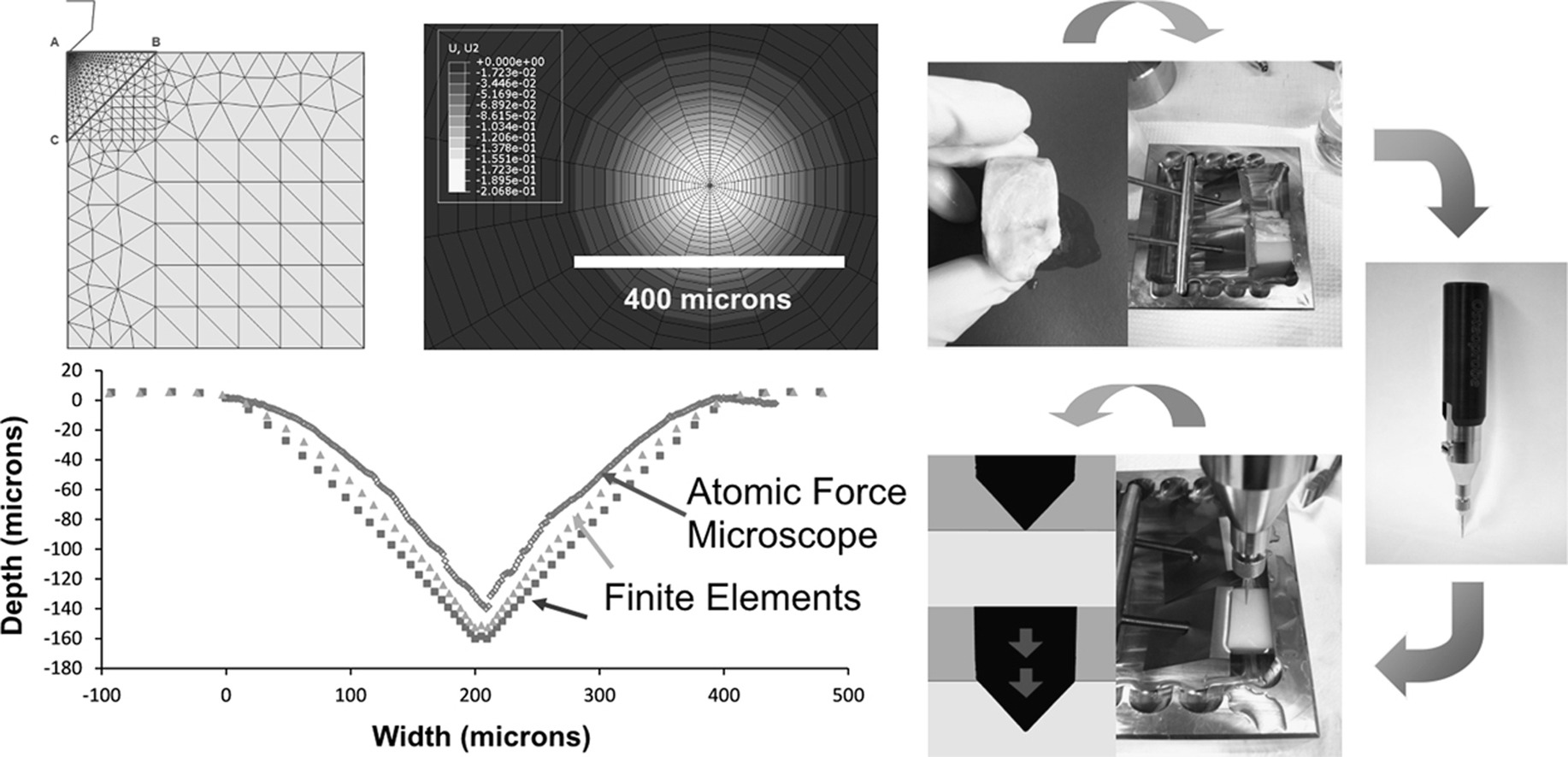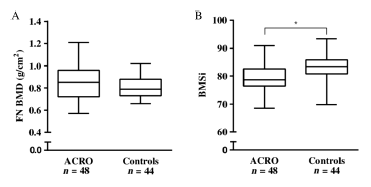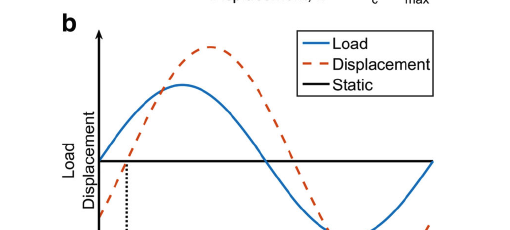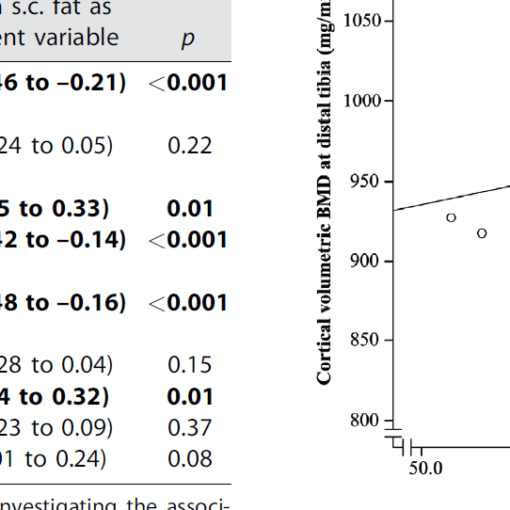Abstract
In an attempt to study the mechanical behavior of bone under indentation, methods of analyses and experimental validations have been developed, with a selected test material. The test material chosen is from an equine cortical bone. Stress-strain relationships are first obtained from conventional mechanical property tests. A finite element simulation procedure is developed for indentation analyses. The simulation results are experimentally validated by determining (1) the maximum depth of indentation with a single cycle type of reference point indentation, and (2) the profile and depth of the unloaded, permanent indentation with atomic force microscopy. The advantage of incorporating in the simulation a yield criterion calibrated by tested mechanical properties, with different values in tension and compression, is demonstrated. In addition, the benefit of including damage through a reduction in Young’s modulus is shown in predicting the permanent indentation after unloading and recovery. The expected differences in response between two indenter tips with different sharpness are predicted and experimentally observed. Results show predicted indentation depths agree with experimental data. Thus, finite element simulation methods with experimental validation, and with damage approximation by a reduction of Young’s modulus, may provide a good approach for analysis of indentation of cortical bone. These methods reveal that multiple factors affect measured indentation depth and that the shape of the permanent indentation contains useful information about bone material properties. Only further work can determine if these methods or extensions to these methods can give useful insights into bone pathology, for example the bone fragility of thoroughbred racehorses.
https://www.ncbi.nlm.nih.gov/pubmed/25528690
J Mech Behav Biomed Mater. 2015 Feb;42:282-91. doi: 10.1016/j.jmbbm.2014.11.020. Epub 2014 Nov 29.





